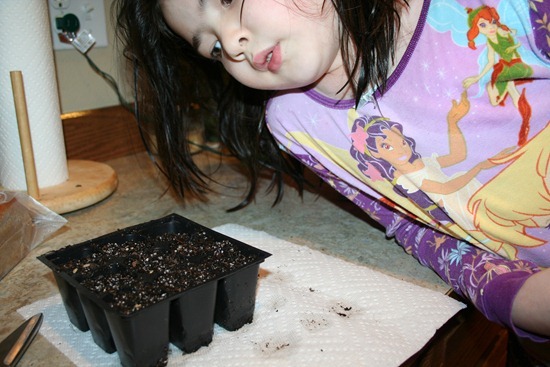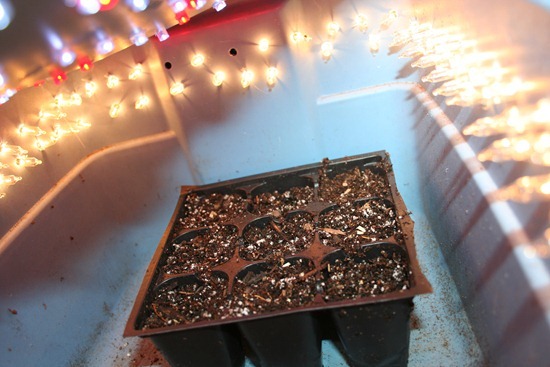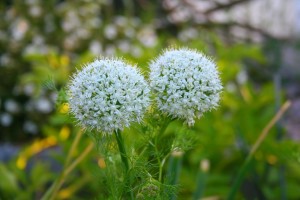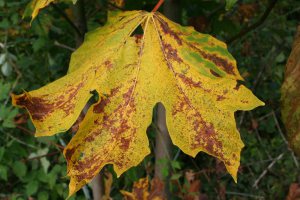My Tomato Planting Adventures
11 years ago guest post, pests, tomato 1 Comment

Tomato Plants are not known for being forgiving. They are not beginner plants. Tomatoes give seasoned gardeners nightmares. So why is it that I keep torturing myself by trying and trying to grow them?
Maybe I like a challenge.
Maybe I think that I’ll do better with a difficult crop, since my luck with “easy” plants is sporadic at best.
Maybe I really like Salsa.
Ok, so it’s mostly that last one. I like to do things for myself, and making salsa with my own tomatoes would be awesome.
Of course, my need to do everything for myself is part of my problem. When I first decided that I was going to take on tomatoes, I wanted to start from the very beginning, no pre-grown seedlings for me. I read up on how to grow my own seedlings and then I found the tip that was going to save me time, effort, and frustration.
I could direct-sow my seeds right in the garden as long as there was four months between frosts in my area! That was perfect! As soon as it started to get warm I would plant my seeds and I’d have tomatoes in no time.
So I spent the entire second weekend of March preparing my “garden” (an unearthed portion of my back yard). I had the hose system all prepared so I wouldn’t get water on the leaves or fruit; I’d read about those nasty black spots. I had chosen an area that had a decent sun/shade ratio, so I was happy with that. I had chosen the perfect tomato cages for when it was time to use them. I sat down Sunday night, exhausted, but with the taste of homemade salsa on my mind.
That Wednesday my heart broke because of frost. I swore I’d never enjoy snow again.
I looked at the weather report. I read gardening blogs. Looks like I had jumped the gun. Apparently Mother’s Day is a really popular day to plant tomatoes. Seedlings, of course, but supposedly it only took 5-6 weeks to grow seedlings. I still had plenty of time. But I wasn’t going to take a shortcut this time. I decided to pot them.
Two weeks later, I had managed to drown all of my newly planted tomato seeds. I was told by a friend that there was no way the seeds could survive the daily dousing I’d been giving them, so I didn’t end up living with false hope that I’d have tomatoes any time soon.
By this time, I was frustrated. I stayed home from work for two days and read everything I could about planting tomatoes. I was going to try this one more time.
I used a special seedling soil mix. I kept my plants in a warm, but dark area. I watered less often, but was sure that my seeds didn’t get dry.
They sprouted. I repotted them in a 6-pack, each plant in their own little home. I had a special spray bottle for my tomato plants. After germination, I had them in the light almost constantly, but not quite, after all, too much light was as harmful as not as much.
All that was in my head were facts about tomatoes. I coddled those poor plants, but they were making it. I fertilized them. I petted them so to “train” them to be strong. I may have talked to them a bit. I was getting ridiculous.
I of course had been depriving myself of salsa because I knew my own homemade salsa would be worth waiting for. I finally caved and made some from store-bought tomatoes. That moment (hour) of salsa-goodness reminded me why I was doing this, and I remembered to relax. After all, gardening is supposed to be good for you.
3 of my plants made it to my garden. 2 bore tomatoes. Many of those tomatoes were either spotted or devoured by bugs. But I did have one nice batch of salsa to show for all my hard work.
Since then, I’ve given in and bought seedlings. Some years I still start from seed. To my dismay, my second year yielded fewer tomatoes than my first. But then the third year was pretty good. I’ve learned lots of tricks, and I’ve turned my focus to other plants, but tomatoes have probably taught me more gardening lessons than any other vegetable. Most of all, they’ve taught me that I need to relax and have patience. I’ve also learned that the world doesn’t end when plants die, as sad and frustrating as it can be.
What gardening lessons have you learned?
Mackenzie Kupfer has been a lover of all things green since the age of six when she began gardening with her Nana. She is currently an online publisher for the tomato cage supplier, Avant Garden Decor. In her free time, Mackenzie enjoys attending garden shows, hiking, and collecting ceramic tea sets.








